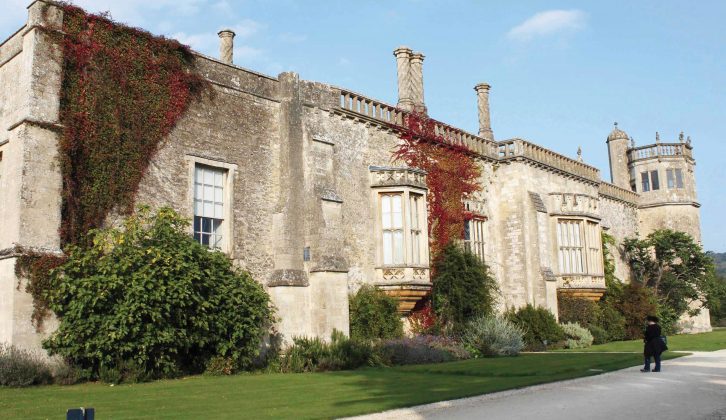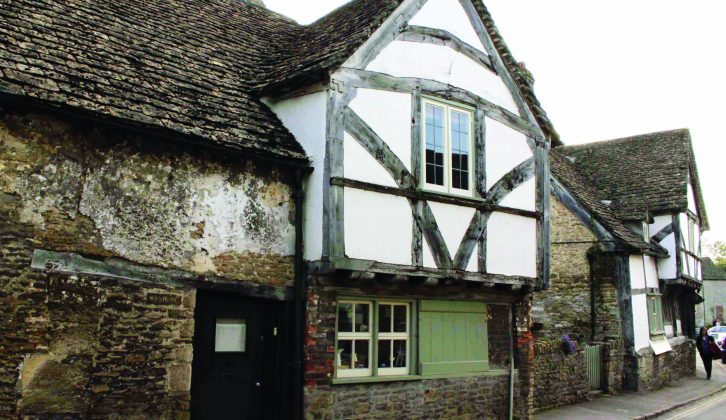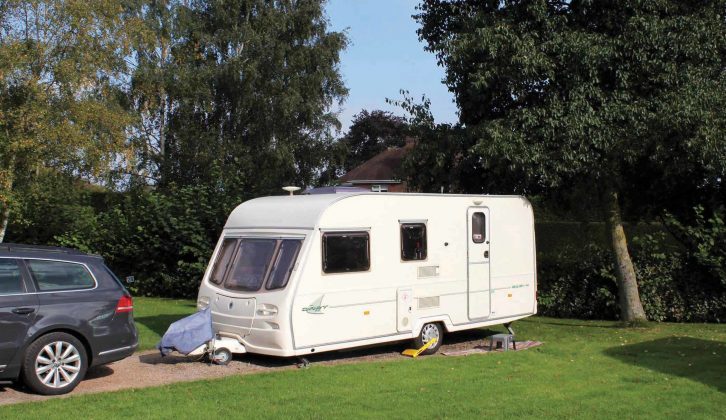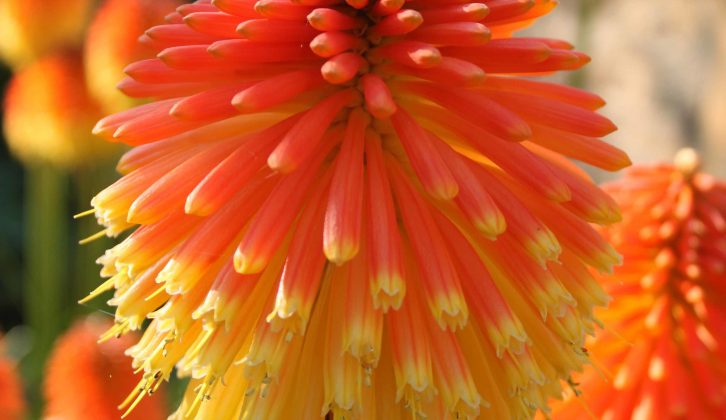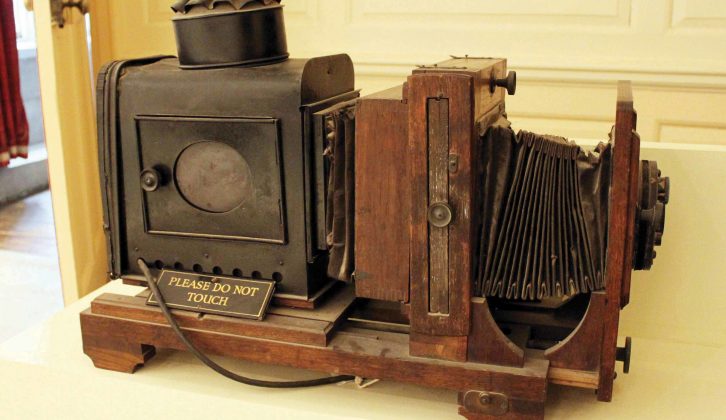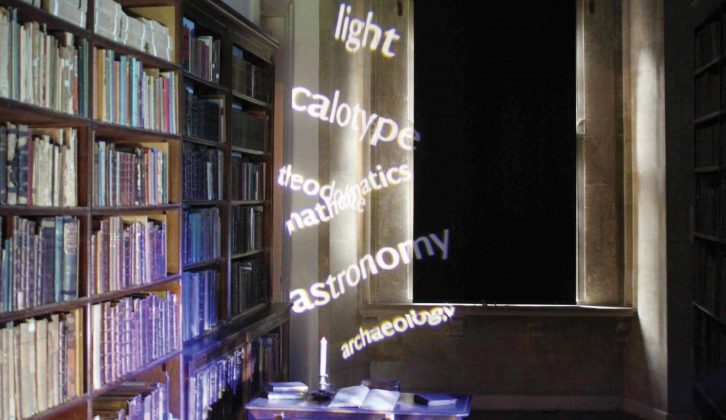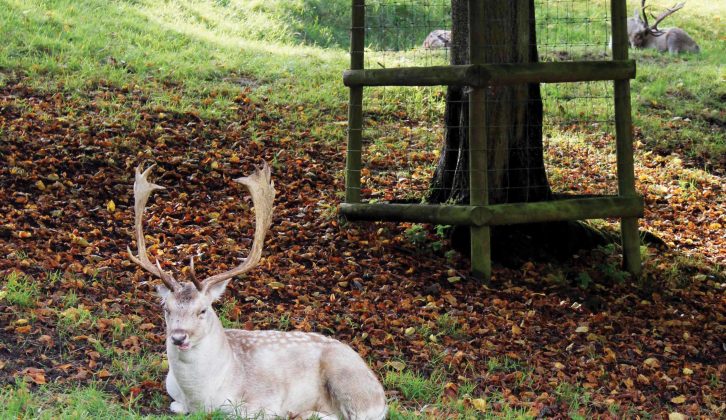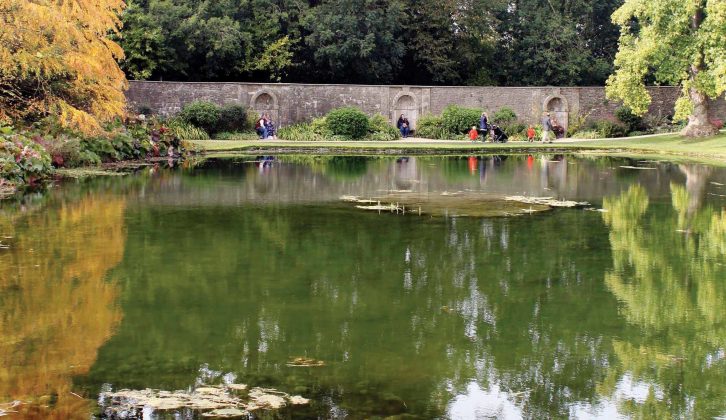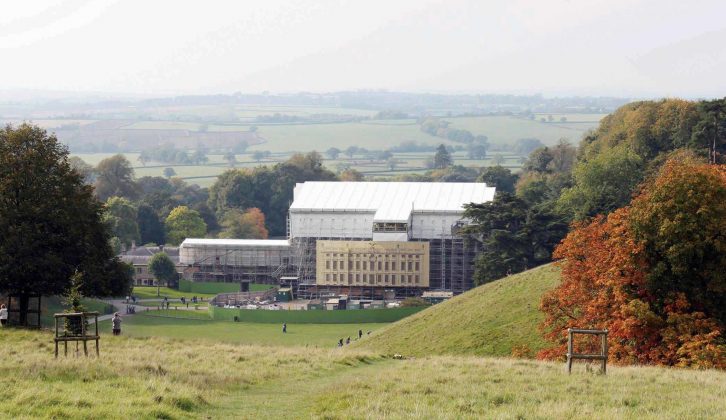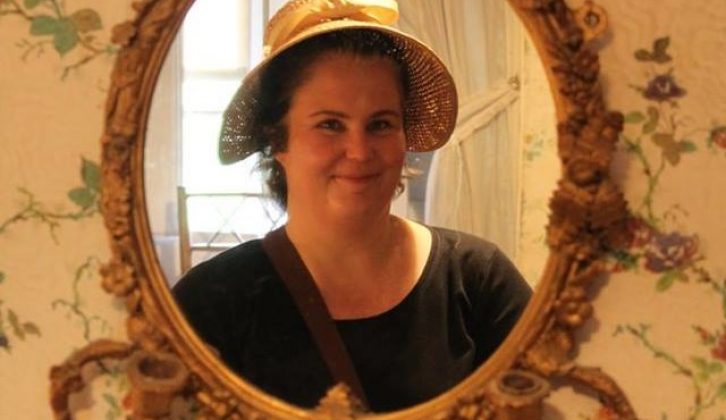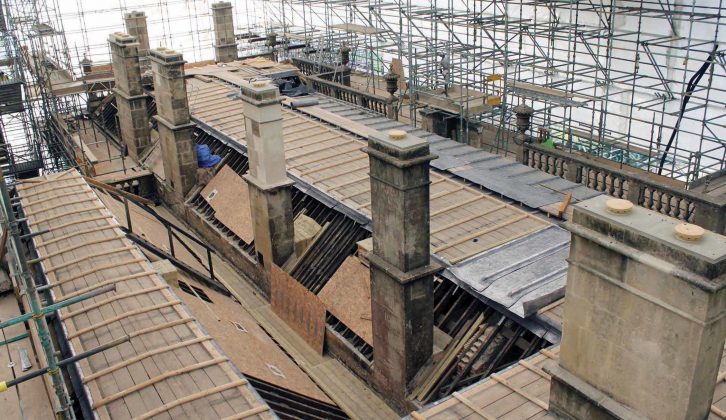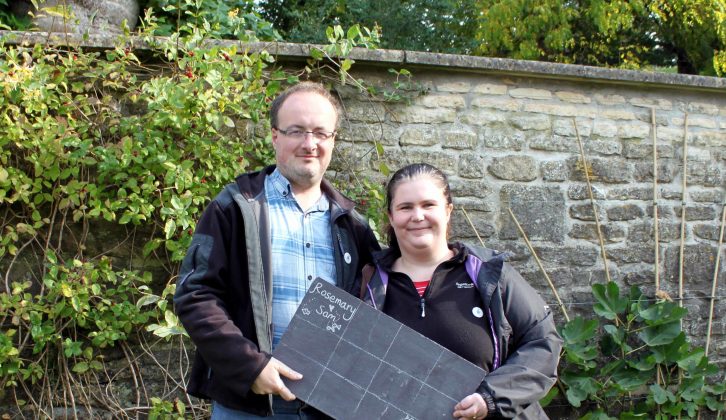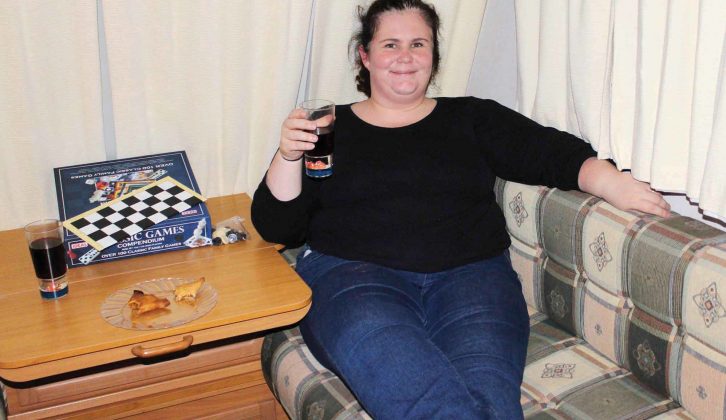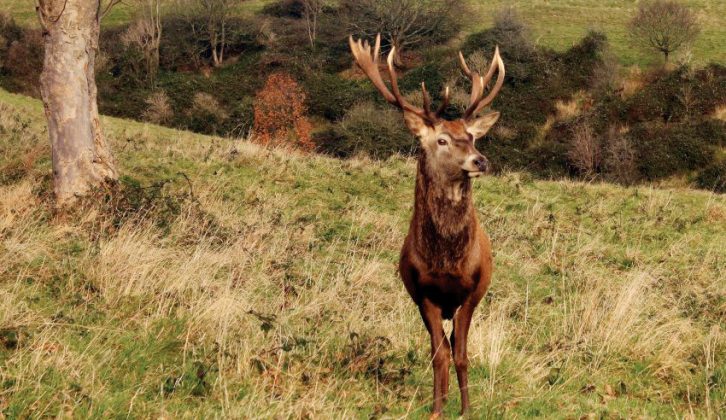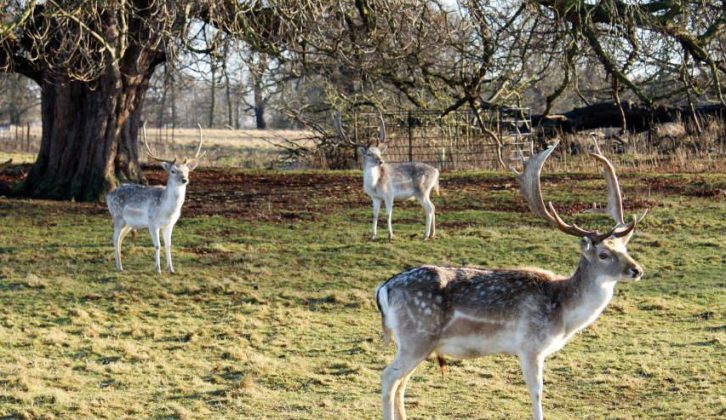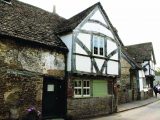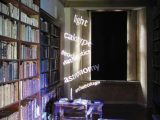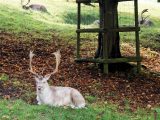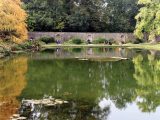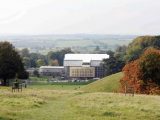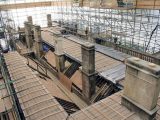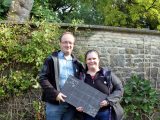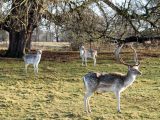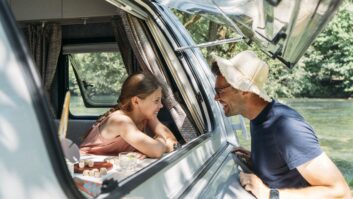For my wife Rosemary and me, choosing our first caravan was quite a long and fragmented process. To cut a long story short, we got as far as looking at a few layouts early last year, but then had to put our plans on hold pending a house move.
After some months and more expense, that fell through so, feeling considerably poorer, we started to look at a few secondhand caravans. But it was only after Rosemary was away for a weekend in late August, leaving me at home with the internet and a bottle of wine, that we became the proud owners of a 2002 Avondale Dart. It was in excellent condition and a snip at just under £3000.
Unfortunately, a frantically busy September for both of us prevented us from putting our caravan to use until early October 2015. But if the saga of buying it had been long, choosing where to go in it was much shorter. The thought process was thus: look up the National Trust properties with deer parks – we’re both members and deer are a special favourite of ours – and choose the one with the best weather forecast!
How to pitch up (or not!)
That turned out to be Dyrham Park near Chippenham, Wiltshire, and a fine Saturday morning found us en route to Piccadilly Caravan Park in Folly Lane West, Lacock. Before too long, we had arrived and it was time to pitch up. This involved:
- Realising that we had left the owner’s handbook at home
- Opening every cupboard and external locker as we tried to remember where we had put the water pump
- Wasting some time in failing to connect the waste-water hose to the fresh-water inlet valve
- Getting annoyed after realising that I had not connected the electricity cable properly either.
Eventually, we managed to get water and electricity hooked up and regained some energy with our first cup of tea.
By that time it was early afternoon, so we decided to leave Dyrham Park until the following day and set out to explore Lacock. This beautiful village in the South Cotswolds includes many medieval half-timbered and limewashed buildings, almost all of which are owned and preserved by the National Trust. It has also featured in the ‘Harry Potter’ films and TV adaptations of Pride and Prejudice and Emma.
The centrepiece is the superb Lacock Abbey. Built as a convent in the 13th century, it subsequently became the home of William Henry Fox Talbot, the man widely credited with inventing the photographic negative. His first photograph – which was of a window in the abbey – remains preserved in its original condition. A replica of his camera is also on display. It defined photography as we know it for almost 200 years thereafter.
Bottom falls out of our game of draughts
Our visit completed, we returned to the caravan armed with pasties from the village bakery. At that point we discovered that we had nothing with which to light the gas oven. A local supermarket came to the rescue and provided other essentials, including plastic plates and the correct lead to connect our TV to the aerial socket.
Later, we walked back into Lacock for a meal at the Red Lion. It’s a pleasant-enough pub, but the food is expensive and we found it disappointing. We skipped dessert and returned to the van for a game of draughts, but after just a few moves my seat collapsed! One of the supports beneath the cushion had become detached from the staples holding it in place. It was easily remedied by knocking them in with a hammer.
Our pieces ended up all over the floor, though. The game abandoned (Rosemary claims she won), we opened a bottle of wine. At least we had remembered the corkscrew!
Making it snappy
Sunday morning dawned cold and misty. Neither of which seemed to matter to Dyrham Park’s herd of fallow deer, which were out in full force. Around 200 of these beautiful animals roam freely in the 270 acres of grounds, and they appear to be largely unfazed by large numbers of visitors. I could have spent hours watching and photographing them, but I had to be torn away because we also had the house to see.
Well, when I say see… at the time it was almost invisible from the outside due to being covered by scaffolding. It was undergoing major refurbishment to repair the leaky roof. This also meant that all but the ground floor was closed. However, it was possible to get a lift to the top of the scaffolding tower to see the progress of the roof repair works. The mist had cleared by then so we also had views of the immaculate grounds and the spectacular Gloucestershire and Wiltshire countryside.
On our return to terra firma, we were invited to sign our names on one of the pieces of slate that had been bought for the roof repairs, for a donation of £5 towards the conservation project. It feels a little strange and somehow inspiring to know that our names will soon form part of Dyrham’s history.
More deer were present to bid us farewell as we walked back up the drive to the car park, but all too soon it was time to go home. We were already looking forward to our next trip away, wherever that might happen to be. Certainly we’ve only scratched the surface of this beautiful part of the country.
In the meantime, we need to buy some more accessories. A mattress topper – we discovered that the front cushions are fine to sit on, but quite hard to sleep on – a washing-up bowl and a portable vacuum cleaner are all high on our shopping list.
Piccadilly Caravan Park
We stayed at Piccadilly Caravan Park in Lacock mainly because it was the closest we found with pitches available at short notice. It’s a mere half-mile from the village. It has 45 pitches (12 of them hardstandings; 42 of the pitches with electric hook-up) over three fields and has a washblock and a play area. The grounds and facilities were immaculate. The campsite is in Folly Lane West, Lacock, Chippenham, Wiltshire and is open 23 March to 30 October.
Five more deer parks to visit
Admire these grand wild creatures amid stunning parklands around Britain.
- Ashton Court Estate near Bristol has separate 100-acre parks for its fallow and red deer, and offers guided walks through both – even in winter. Stay at Brook Lodge Farm Camping & Caravan Park, Cowslip Green, Wrington, near Bristol.
- Attingham Park is a National Trust property outside Shrewsbury, with fallow deer wandering its grounds. It’s fun to watch the wardens feed them in the winter. Stay at Ebury Hill Camping & Caravanning Club Site, Ring Bank, Haughton, Shrewsbury, Shropshire.
- Carmarthenshire’s Dinefwr has more than 100 fallow deer, and 700-year-old trees. It’s Wales’ only parkland national nature reserve. Stay at Riverview Touring Park, The Dingle, Pontarddulais, near Swansea.
- Deer have freely roamed the grounds of Richmond Park since the 1500s. Today, 630 red and fallow deer live at this Royal Park in south-west London. Stay at Chertsey Camping & Caravanning Club Site, Bridge Road, Chertsey in Surrey.
- Fountains Abbey is a National Trust property near Ripon, West Yorkshire, that boasts more than 500 red, fallow and Sika deer in its medieval park. Stay at Knaresborough Caravan Club Site, New Road,Scotton, Knaresborough, North Yorkshire.
We returned to the van for a game of draughts, but after just a few moves my seat collapsed!
